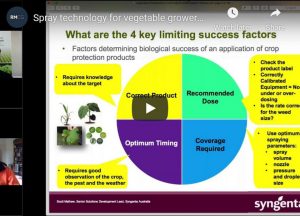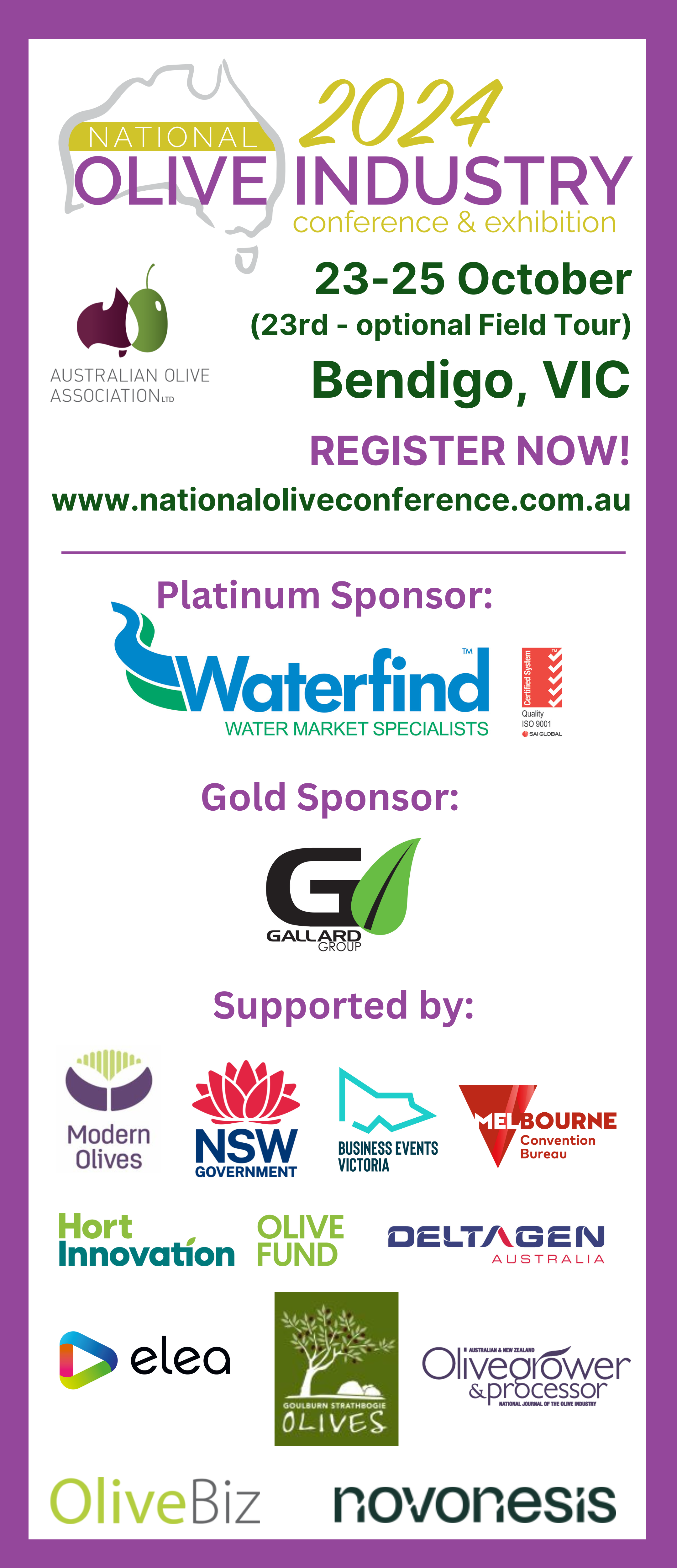
The olive industry is moving forward successfully with the adoption of IPDM (integrated pest and disease management) practices, and chemicals still play an important role for many growers, particularly in terms of early and spot spraying to control insect pests and diseases.
But spraying only works when you do it correctly, and incorrect spray application techniques can cause a lot of problems: spray drift and over-spray affecting other crops, environmental damage and the economic effects of reduced control of pests resulting in lower crop yields and grower returns. All of which also means wasted chemicals and wasted expenditure by your business.
There’s help at hand to make sure you’re getting it right, with a recording now available of a Soil Wealth ICP webinar on spray technology and how to use it.
The informative and interactive one-hour webinar provides useful information on a wide range of spraying equipment and practices, along with plenty of helpful tips, from the perspectives of a service provider, farmer and agronomist. And while it was produced with vegetable growers in mind, spraying is a pretty cross-industry topic so there’s plenty of relevance for olive growers.
Speakers include:
- Scott Mathew from Syngenta, on the service provider perspective and maximising the performance of your spray application: tips and tools (presentation slides available);
- Scott Samwell of Eastbrook Vegetable Farms, on the growers perspective and spray equipment: how to choose it, test it and use it properly;
- Stuart Grigg of Stuart Grigg Ag-Hort Consulting, on the agronomist perspective and how to best use chemical control options in your farming system: addressing common grower questions.
Access the webinar recording here.
This resource has been produced by the Soil Wealth and ICP project, funded by Hort Innovation using the vegetable research and development levy and funds from the Australian Government, and was jointly delivered by RM Consulting Group and Applied Horticultural Research.



